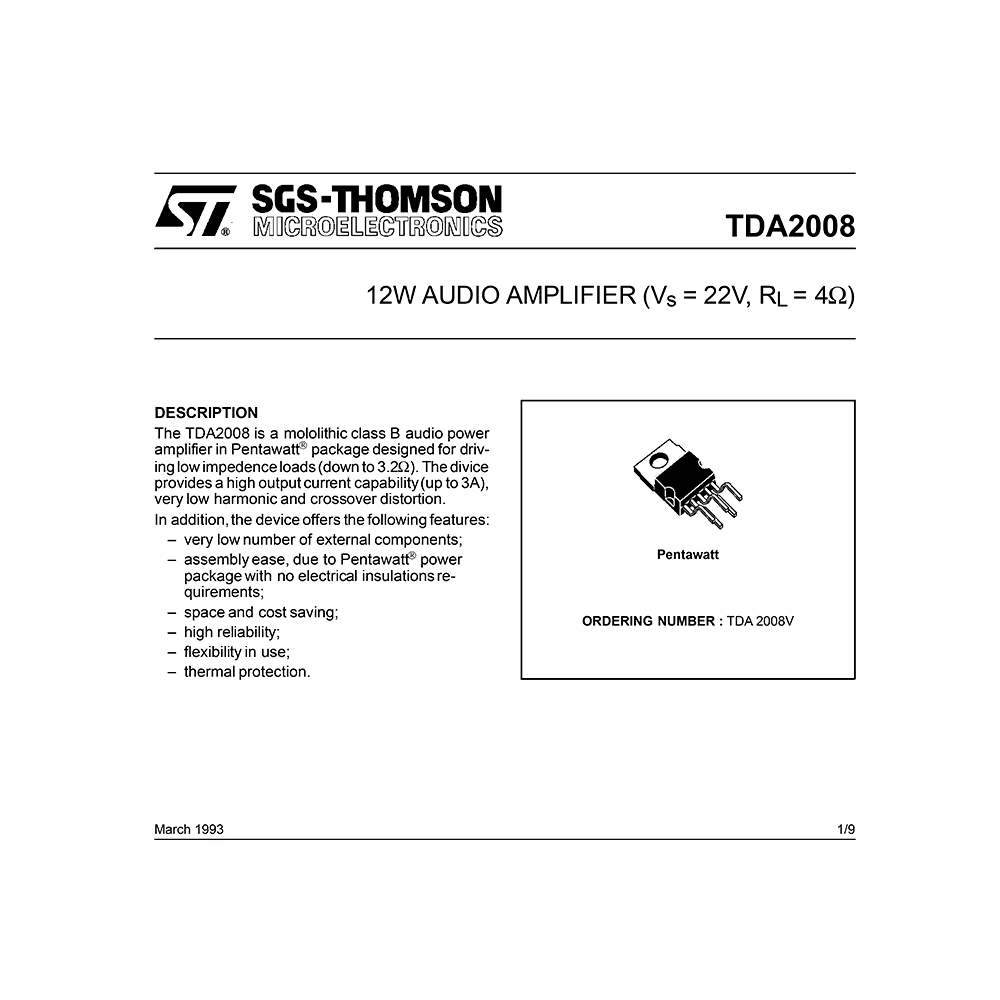TDA2008 ST 12W Audio Amplifier Data Sheet
Download PDF datasheet for ST TDA2008 12W Audio Amplifier (V = 22V, R = 4 Ohms) Integrated Circuit (EN) 9 pages 1993 zip
Description
This PDF data sheet is for the SGS-Thomson TDA2008 audio amplifier.
About the Item
ST TDA2008 12W Audio Amplifier (V = 22V, R = 4 Ohms) Integrated Circuit
The TDA2008 is a mololithic class B audio power amplifier in Pentawatt(R) package designed for driving low impedenceloads (down to 3.2 Ohms). Thedivice provides a high output current capability(up to 3A), very low harmonic and crossover distortion.
(PDF) DATASHEET (ENGLISH)
SUMMARY OF CONTENTS
Typical Application Circuit
Pin connection. TDA2008 pinout.
Absolute Maximum Ratings: DC supply voltage, Output peak current, Power dissipation, Storage and junction temperature.
Schematic Diagram
DC Test Circuit
AC Test Circuit
Thermal Data
Electrical Characteristics
Application Information
Figure 1. Typical application circuit
Figure 2. P.C. board and component layout for the circuit of fig. 1
Figure 3. 25W bridge configuration application circuit
Figure 4. P.C. board and component layout for the circuit of fig. 3
Figure 5. Quiescent current vs. supply voltage
Figure 6. Output voltage vs. supply voltage
Figure 7. Output power vs. supply voltage
Figure 8. Distortion vs. frequency
Figure 9. Supply voltage rejection vs. frequency
Figure 10. Maximum allowable power dissipation vs. ambient temperature
Practical Considerations. Printed circuit board. Assembly suggestion. Application suggestions.
Pentawatt Package Mechanical Data
Why download the Datasheet?
This datasheet provides all the information from SGS-Thomson about the TDA2008 audio amplifier, as detailed in the table of contents. Reading it completely will address most questions you might have. You can download and save it for offline use, including viewing it on your device or printing it for your convenience if you prefer a paper version.
How to download the Datasheet?
Download it by clicking the button below
Helped you out?
Glad to hear that. It would be awesome if you could . . .


